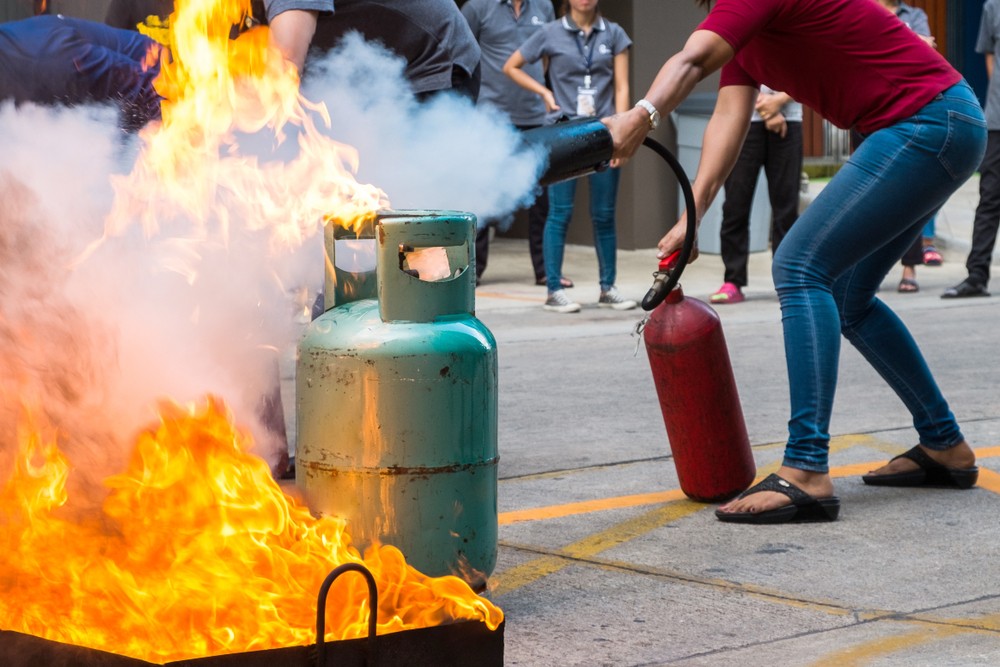One of the most dangerous events that can occur unexpectedly is fire. When a fire breaks out in a kitchen or a large building, acting quickly and effectively can make the difference between a disaster and a catastrophe. Firefighting skills are essential for everyone, not just experts. Mastering these skills can save lives in homes, schools, and the workplace. This book describes what everyone needs to know to prevent fires from starting and to extinguish them again.
How Fire Works
Before you learn how to extinguish a fire, it is essential to understand what fire is. Heat, fuel, and air must be present in the right proportions for combustion to occur, and combustion is fire. These three are known as the “fire triangle.” If any one of these factors is missing, the fire will go out. This is the core idea behind most firefighting methods. Understanding how fire starts and spreads can help you stop and control fires.
Why Fires Happen
Fires happen for many reasons, but most are caused by human error or negligence. Unattended cooking is one of the leading causes of home fires. Electrical problems, such as faulty wiring or overloaded power strips, are also common causes. Paper, toxic liquids, and office machinery can be dangerous if not properly maintained. The first step to preventing fires is to be aware of the fires around you.
Different Types of Fires and How to Put Them Out
Using the wrong fire extinguisher to put out the wrong fire can make things worse. Fires are divided into different categories based on what is burning. Common flammable materials, such as wood, paper, or fabric, cause Class A fires. Class B fires are caused by flammable liquids, such as oil or gasoline. Class C fires are caused by electricity, and Class D fires are caused by flammable metals. Finally, Class K fires are only caused by cooking oil and grease. Each fire requires a specific type of fire extinguisher. Knowing the type of fire will help you choose the right tools and take the right action.
Preparing for and Extinguishing a Fire
Having a fire extinguisher is important, but knowing how to use it is even more important. You can learn the basic method by saying “PASS.” To open the fire extinguisher, first pull out the pin. Don’t aim at the flame; aim at the base of the fire. To spray the accelerant, squeeze the lever. Aim at the base while moving left and right until the fire is out. If you’ve never used a fire extinguisher before, it might be a good idea to take a class to practice and build your confidence.
Knowing When to Fight and When to Run
You shouldn’t try to put out every fire yourself. If a fire is spreading quickly, there’s a lot of smoke, or you’re not sure you can put it out, it’s best to leave immediately and call the fire department. Trying to put out a fire that is out of your control can injure or even kill you. If the fire looks dangerous or you feel like you can’t control it, it’s safer to leave and let the professionals handle it.
Why Fire Alarms and Detectors Are Important
Fire and smoke alarms are your first line of defense. They should be installed in every bedroom, hallway, and living room. In commercial buildings, a fire alarm system with sprinklers and water spray is essential and often required by safety regulations. They should be tested and maintained regularly. For optimal performance, replace the batteries at least once a year and the entire system every ten years.
Create an Escape Plan
Every home and business needs an escape plan. Everyone in the building should know at least two ways to escape from each room, as well as a place to gather outside in case of an emergency. During fire drills, everyone should remain calm and know what to do in a real situation. It is important to teach children in families how to crawl under thick smoke and escape safely (without hiding).
Career as a firefighter
Professional firefighters undergo extensive training to prepare for dangerous situations. Once on the scene, they control the fire, establish a control zone and fight the fire in a planned manner, making sure no one gets trapped. Their job is not just to extinguish fires; they also participate in rescue missions, manage dangerous goods and even provide medical care. Their skills and courage are essential to the safety of society.
Firefighting Equipment for Your Home and Workplace
In addition to fire extinguishers, there are other tools that can make your home safer in the event of a fire. You can use a fire blanket to put out a small fire or to wrap someone whose clothing is on fire. To make it easier to escape through a window, you can place an escape ladder on the second floor above the bed. Installing a sprinkler system and building your home with non-combustible materials are long-term investments to protect your home and business.
Finally
When people understand the basic principles of firefighting, they can respond quickly, safely, and successfully in an emergency. Not everyone needs to be a firefighter, but everyone should be prepared and know when to act and when to call for help. Everyone needs to be alert to fire. By gaining safety knowledge and taking the right precautions, we can all help improve our homes, workplaces, and communities.

